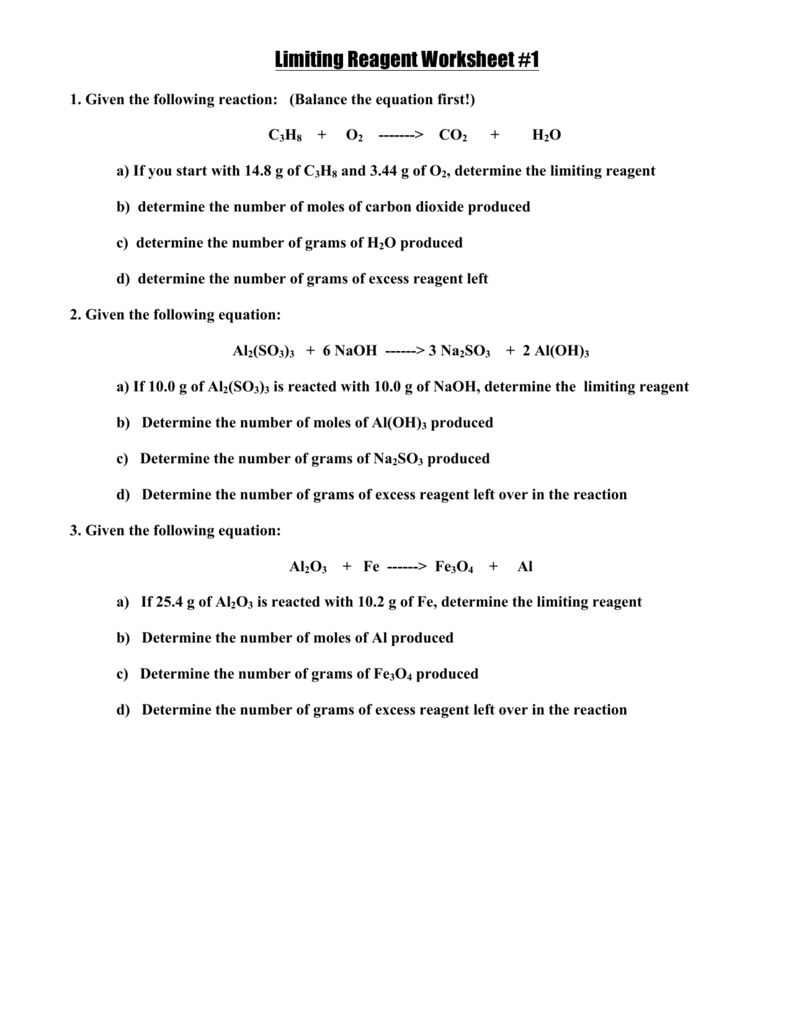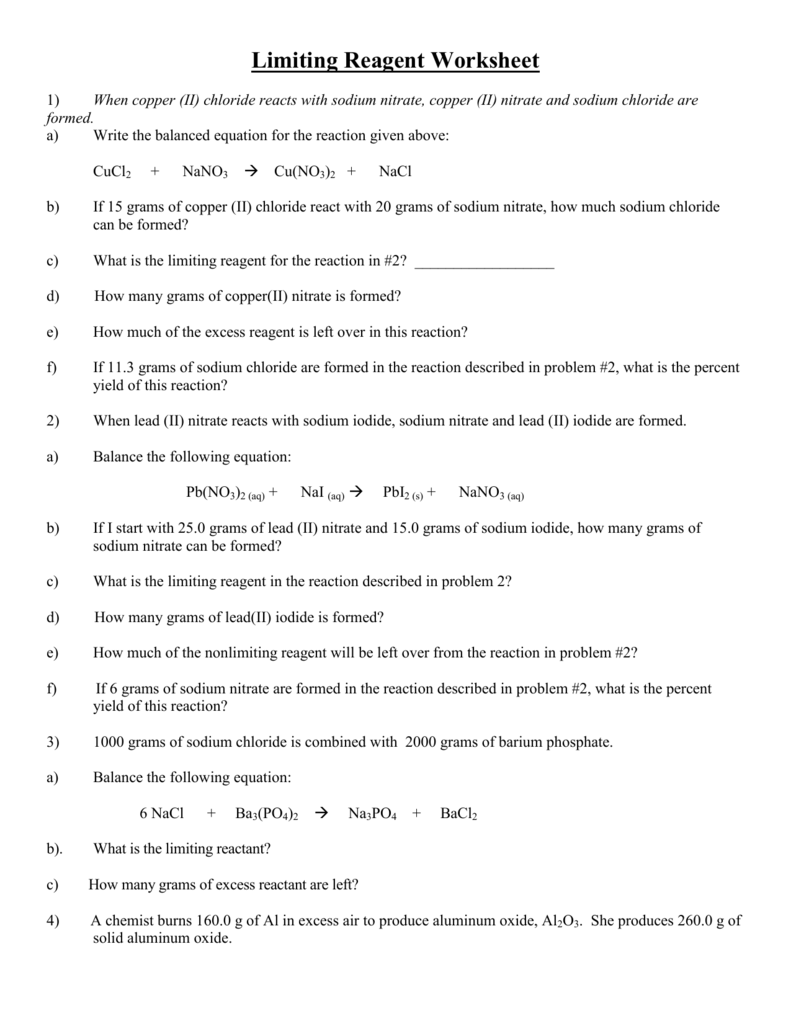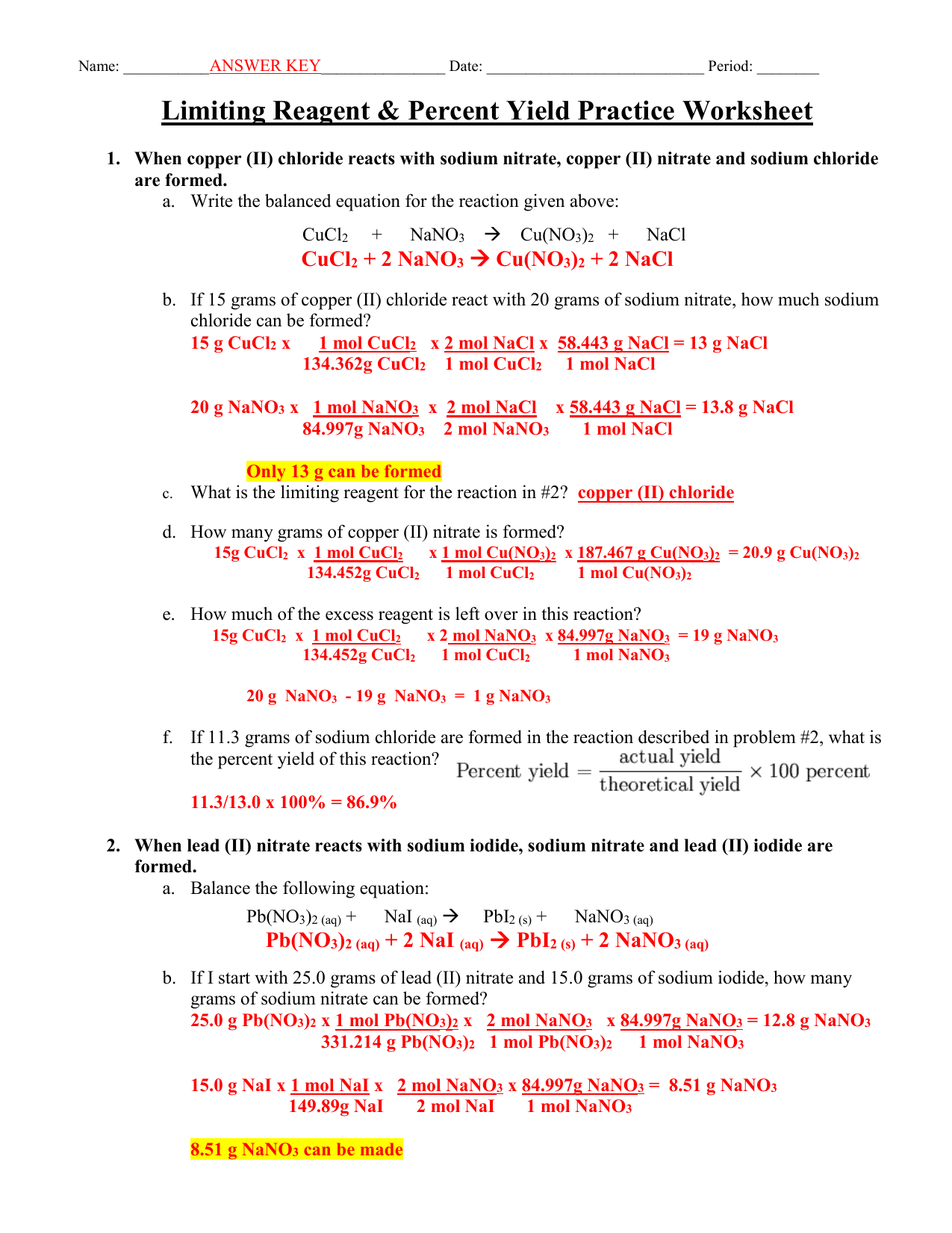Limiting And Excess Reactants Worksheet With Answers
Limiting And Excess Reactants Worksheet With Answers - There are two possibilities, the reactants are in the right stoichiometric ratio or that one of them is in. Determine which reactant is in excess. (a) identify the limiting reactant. How many moles of nh3 can be produced from the reaction of 28 g of n2 ? Determine how much product each reactant can produce. Students must determine which reactant is in excess. Hydrogen is limiting and carbon monoxide is in excess. Worksheet on excess and limiting reactants/reagents. A student places 2.36 moles of acetic acid. (b) how many moles of carbon dioxide gas (co2) will form?
Worksheet on excess and limiting reactants/reagents. (a) identify the limiting reactant. (b) how many moles of carbon dioxide gas (co2) will form? Hydrogen is limiting and carbon monoxide is in excess. Students must determine which reactant is in excess. How many moles of nh3 can be produced from the reaction of 28 g of n2 ? Determine how much product each reactant can produce. A student places 2.36 moles of acetic acid. There are two possibilities, the reactants are in the right stoichiometric ratio or that one of them is in. Determine which reactant is in excess.
(a) identify the limiting reactant. Determine which reactant is in excess. Students must determine which reactant is in excess. Hydrogen is limiting and carbon monoxide is in excess. Determine how much product each reactant can produce. Worksheet on excess and limiting reactants/reagents. (b) how many moles of carbon dioxide gas (co2) will form? There are two possibilities, the reactants are in the right stoichiometric ratio or that one of them is in. How many moles of nh3 can be produced from the reaction of 28 g of n2 ? A student places 2.36 moles of acetic acid.
Limiting Reactants and Percent Composition Notes and Worksheet Set
(a) identify the limiting reactant. There are two possibilities, the reactants are in the right stoichiometric ratio or that one of them is in. Students must determine which reactant is in excess. How many moles of nh3 can be produced from the reaction of 28 g of n2 ? Determine how much product each reactant can produce.
Cool Limiting And Excess Reactants Worksheet Answers Ideas
Worksheet on excess and limiting reactants/reagents. A student places 2.36 moles of acetic acid. Hydrogen is limiting and carbon monoxide is in excess. Students must determine which reactant is in excess. Determine which reactant is in excess.
Cool Limiting And Excess Reactants Worksheet Answers Ideas
Hydrogen is limiting and carbon monoxide is in excess. Worksheet on excess and limiting reactants/reagents. Determine how much product each reactant can produce. How many moles of nh3 can be produced from the reaction of 28 g of n2 ? Students must determine which reactant is in excess.
Limiting Reactant Worksheet Answers
(a) identify the limiting reactant. A student places 2.36 moles of acetic acid. Determine which reactant is in excess. (b) how many moles of carbon dioxide gas (co2) will form? There are two possibilities, the reactants are in the right stoichiometric ratio or that one of them is in.
Solved Worksheet on Limiting Reactants Use the following
Determine which reactant is in excess. A student places 2.36 moles of acetic acid. Worksheet on excess and limiting reactants/reagents. Hydrogen is limiting and carbon monoxide is in excess. There are two possibilities, the reactants are in the right stoichiometric ratio or that one of them is in.
Limiting And Excess Reactants Worksheets With Answers
There are two possibilities, the reactants are in the right stoichiometric ratio or that one of them is in. Worksheet on excess and limiting reactants/reagents. Determine how much product each reactant can produce. Determine which reactant is in excess. (b) how many moles of carbon dioxide gas (co2) will form?
Limiting Reagent Worksheet 1
Students must determine which reactant is in excess. Hydrogen is limiting and carbon monoxide is in excess. Worksheet on excess and limiting reactants/reagents. Determine which reactant is in excess. There are two possibilities, the reactants are in the right stoichiometric ratio or that one of them is in.
Determining The Limiting Reactant Worksheet
A student places 2.36 moles of acetic acid. (b) how many moles of carbon dioxide gas (co2) will form? Determine which reactant is in excess. Worksheet on excess and limiting reactants/reagents. (a) identify the limiting reactant.
How to Solve Limiting and Excess Reactants Worksheet with PDF Answers
Determine which reactant is in excess. A student places 2.36 moles of acetic acid. (b) how many moles of carbon dioxide gas (co2) will form? How many moles of nh3 can be produced from the reaction of 28 g of n2 ? There are two possibilities, the reactants are in the right stoichiometric ratio or that one of them is.
Limiting And Excess Reactants Worksheet
(a) identify the limiting reactant. A student places 2.36 moles of acetic acid. Students must determine which reactant is in excess. There are two possibilities, the reactants are in the right stoichiometric ratio or that one of them is in. How many moles of nh3 can be produced from the reaction of 28 g of n2 ?
Determine How Much Product Each Reactant Can Produce.
There are two possibilities, the reactants are in the right stoichiometric ratio or that one of them is in. (b) how many moles of carbon dioxide gas (co2) will form? Hydrogen is limiting and carbon monoxide is in excess. (a) identify the limiting reactant.
A Student Places 2.36 Moles Of Acetic Acid.
Determine which reactant is in excess. Students must determine which reactant is in excess. Worksheet on excess and limiting reactants/reagents. How many moles of nh3 can be produced from the reaction of 28 g of n2 ?









